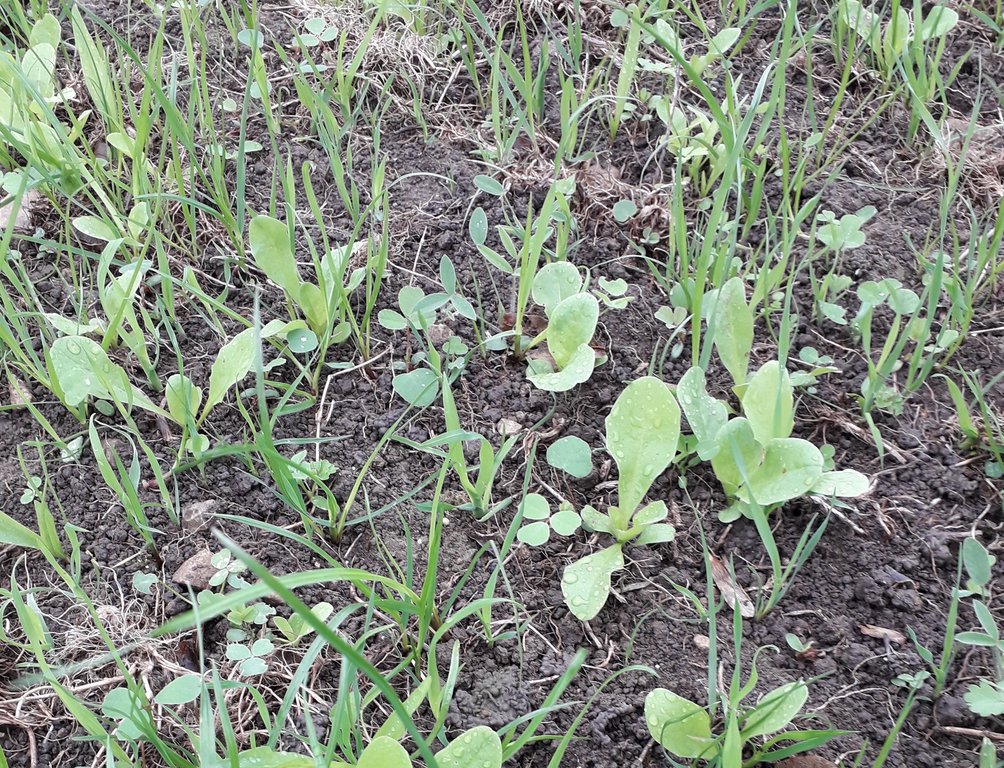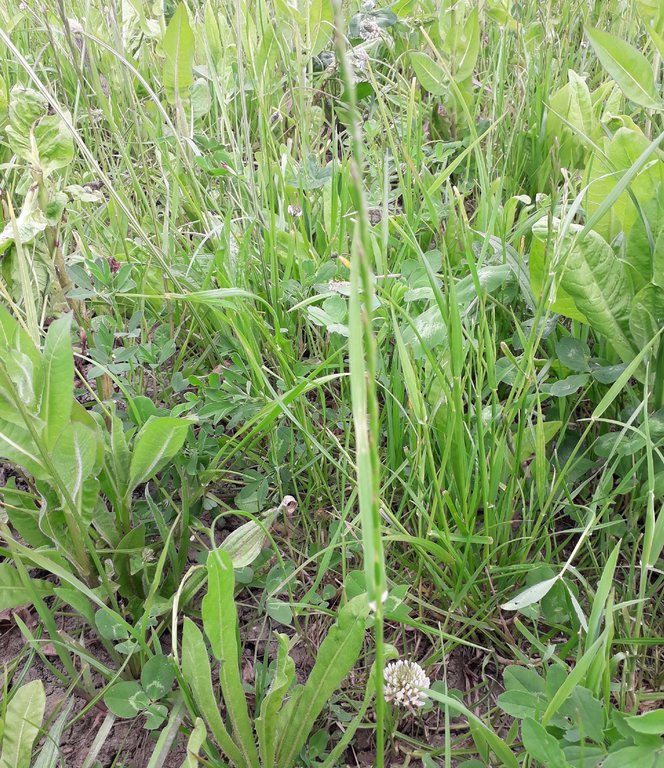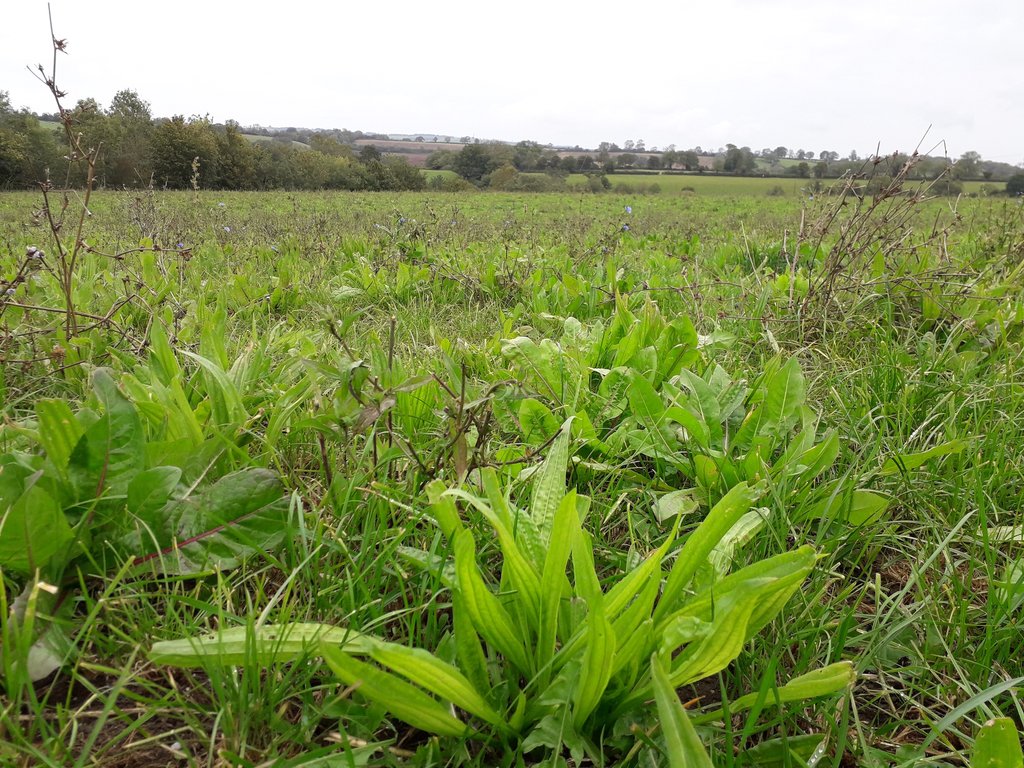Herbal leys in an organic dairy rotational grazing system [United Kingdom]
- Creation:
- Update:
- Compiler: Alan Radbourne
- Editor: –
- Reviewers: William Critchley, Rima Mekdaschi Studer
technologies_5982 - United Kingdom
View sections
Expand all Collapse all1. General information
1.2 Contact details of resource persons and institutions involved in the assessment and documentation of the Technology
land user:
Turner Stephen
Perridge Farm Partnership
United Kingdom
land user:
Hutchings Nathan
Perridge Farm Partnership
United Kingdom
Name of project which facilitated the documentation/ evaluation of the Technology (if relevant)
European Interreg project FABulous FarmersName of the institution(s) which facilitated the documentation/ evaluation of the Technology (if relevant)
Soil Association (Soil Association) - United Kingdom1.3 Conditions regarding the use of data documented through WOCAT
The compiler and key resource person(s) accept the conditions regarding the use of data documented through WOCAT:
Yes
1.4 Declaration on sustainability of the described Technology
Is the Technology described here problematic with regard to land degradation, so that it cannot be declared a sustainable land management technology?
No
2. Description of the SLM Technology
2.1 Short description of the Technology
Definition of the Technology:
Use of diverse herbal leys in dairy production. Provides resilient forage that improves soil health and provides a habitat for biodiversity within a rotational grazing system
2.2 Detailed description of the Technology
Description:
Perridge and Old Burford Farm is a 182 ha organic dairy and beef farm in Somerset. They established 43 ha of diverse herbal leys on their grazing platform between 2018 and spring 2021. There are a further 16 ha to be sown in autumn 2021 with further developments planned thereafter.
The system initially established a mix of chicory, plantain, ryegrass and clover in Autumn 2018, with further fields including a more complex mix of cocksfoot, Festulolium sp (a natural hybrid of ryegrass and fescue) , ryegrass, timothy, tall and meadow fescue, sainfoin; red, white, alsike and sweet clovers, sainfoin, lucerne, birdsfoot trefoil, burnet, chicory, ribgrass forage herb, yarrow and sheep’s parsley.
The most successful establishment has been from autumn sowing, following ryegrass, into a well prepared seed bed with shallow cultivation. This has led to three to four times more effective germination. To prepare the seed bed, a Cambridge roller was used to form a firm seed-bed and stop seeds going too deep, then seed was sown using a grass harrow and air seeder in August. Soil was rolled again with the Cambridge roller to break up clods of soil and then given a flat-roll to give tight soil-to-seed contact and to conserve moisture. The field is then left untouched until the following spring.
Once established by the following spring, the leys are grazed with 140 organic dairy cows, calves and beef animals. They are grazed using a strip rotation approach where they are moved daily at a target of 4,000kg dry matter (DM)/ha, and graze the herbage down to a residual of 1,800kg DM/ha (minimum residual of 10cm). The minimum full rotation is 35 days but this is often longer.
No artificial inputs are used with these diverse herbal leys, thus adhering to organic standards. The legumes (clover, lucerne, sainfoin and birdsfoot trefoil) are used to fix nitrogen, and with the grazing approach of “a third eaten, a third trampled and a third remaining as residual feed” soil organic matter is built up. In addition, the deep rooting species draw up minerals, improve soil structure and infiltration, and increase soil organic matter (SOM). Increasing SOM can also increase soil bacteria and microbe activity. Furthermore, managing the system with a rotational, cell grazing approach prevents selective grazing and increases species diversity and longevity of the sward.
Benefits:
Soil health – deep rooting species improve soil structure and infiltration, and through building up organic matter this improves soil carbon sequestration and leads to greater soil microbial activity and improved nutrient cycling. This is particularly important for this site due to mineral deficiency.
Resilient and persistent forage – deep rooting species bring up moisture from deep in the soil.
Mineral-rich forage – there is a high mineral content in ribwort plantain, chicory, sheep’s parsley, yarrow and burnet. Again, root structure helps, mining more minerals from deeper in the soil profile.
Biodiversity improvements - a wider species diversity of flowing plants is beneficial for biodiversity.
Animal health benefits – Anthelmintic properties of some species with a high tannin content, such as chicory, sainfoin and birdsfoot trefoil, reduce the parasitic worm burden. Also, the way livestock are grazed, with a good residual of forage, reduces soil contact and, therefore, worm risk
There are many positives to herbal leys and these have all been experienced to date, particularly resilient forage production in dry conditions. It currently is too early to see changes in soil structure and health.
The challenge with herbal leys are ensuring successful establishment and selecting the right seed mix. Establishment is reliant on conditions and preparations, with the lifespan of the ley managed through careful grazing by having long rotations and preventing selective grazing. Ensuring you have the correct mix of grasses, herbs and legumes to get the balance of energy and protein is key: there has been some anecdotal experience at this farm of cows not seeming “full” coming off herbal ley, this is thought due to dominance of chicory over grasses.
2.3 Photos of the Technology
2.5 Country/ region/ locations where the Technology has been applied and which are covered by this assessment
Country:
United Kingdom
Region/ State/ Province:
Somerset
Further specification of location:
Shepon Mallet
Specify the spread of the Technology:
- applied at specific points/ concentrated on a small area
Is/are the technology site(s) located in a permanently protected area?
No
Map
×2.6 Date of implementation
Indicate year of implementation:
2018
2.7 Introduction of the Technology
Specify how the Technology was introduced:
- through land users' innovation
- through projects/ external interventions
3. Classification of the SLM Technology
3.1 Main purpose(s) of the Technology
- improve production
- reduce, prevent, restore land degradation
- preserve/ improve biodiversity
- adapt to climate change/ extremes and its impacts
- mitigate climate change and its impacts
3.2 Current land use type(s) where the Technology is applied
Land use mixed within the same land unit:
No

Grazing land
Intensive grazing/ fodder production:
- Improved pastures
Animal type:
- cattle - dairy
- cattle - non-dairy beef
Is integrated crop-livestock management practiced?
No
Products and services:
- meat
- milk
Species:
cattle - dairy and beef (e.g. zebu)
Count:
140
3.3 Has land use changed due to the implementation of the Technology?
Has land use changed due to the implementation of the Technology?
- No (Continue with question 3.4)
3.4 Water supply
Water supply for the land on which the Technology is applied:
- rainfed
3.5 SLM group to which the Technology belongs
- pastoralism and grazing land management
3.6 SLM measures comprising the Technology

agronomic measures
- A1: Vegetation/ soil cover

vegetative measures
- V2: Grasses and perennial herbaceous plants
3.7 Main types of land degradation addressed by the Technology

chemical soil deterioration
- Cn: fertility decline and reduced organic matter content (not caused by erosion)

physical soil deterioration
- Pc: compaction

biological degradation
- Bh: loss of habitats
- Bs: quality and species composition/ diversity decline
- Bl: loss of soil life
3.8 Prevention, reduction, or restoration of land degradation
Specify the goal of the Technology with regard to land degradation:
- reduce land degradation
4. Technical specifications, implementation activities, inputs, and costs
4.2 General information regarding the calculation of inputs and costs
Specify how costs and inputs were calculated:
- per Technology area
Indicate size and area unit:
ha
If using a local area unit, indicate conversion factor to one hectare (e.g. 1 ha = 2.47 acres): 1 ha =:
1ha = 2.47 acres
other/ national currency (specify):
GBP
If relevant, indicate exchange rate from USD to local currency (e.g. 1 USD = 79.9 Brazilian Real): 1 USD =:
0.75
Indicate average wage cost of hired labour per day:
150
4.3 Establishment activities
| Activity | Timing (season) | |
|---|---|---|
| 1. | Shallow cultivator x 4 passes | August |
| 2. | Cambridge Roller | August |
| 3. | Sow seed with grass harrow and air seeder | August |
| 4. | Cambridge Roller | August |
| 5. | Flat Roller | August |
| 6. | Cows let into graze | April |
4.4 Costs and inputs needed for establishment
| Specify input | Unit | Quantity | Costs per Unit | Total costs per input | % of costs borne by land users | |
|---|---|---|---|---|---|---|
| Equipment | Shallow cultivator (up to 4 passes) | Ha | 1.0 | 35.0 | 35.0 | 50.0 |
| Equipment | Cambridge Roller | Ha | 1.0 | 20.0 | 20.0 | 50.0 |
| Equipment | Grass harrow and air seeder | Ha | 1.0 | 31.0 | 31.0 | 50.0 |
| Equipment | Flat roller | Ha | 1.0 | 26.0 | 26.0 | 50.0 |
| Plant material | Herbal ley seed mix | Ha | 1.0 | 218.0 | 218.0 | 50.0 |
| Total costs for establishment of the Technology | 330.0 | |||||
| Total costs for establishment of the Technology in USD | 440.0 | |||||
If land user bore less than 100% of costs, indicate who covered the remaining costs:
Supporting projects such as Fabulous Farmers
Comments:
Contract charge provided so includes labour costs. Cost shown represents the cost per ha. This case study applied on 43 ha.
4.5 Maintenance/ recurrent activities
| Activity | Timing/ frequency | |
|---|---|---|
| 1. | Rotational Strip Grazing | 1 day in >35 days April to November |
4.6 Costs and inputs needed for maintenance/ recurrent activities (per year)
Comments:
Maintenance through cattle grazing each year for the remaining life of the ley.
4.7 Most important factors affecting the costs
Describe the most determinate factors affecting the costs:
Seed cost, success of establishment. If establishment fails or is patchy then reseeding or over seeding will be required.
Additionally longevity of sward is an important factor in cost – how many years will the sward last before reseeding is required. Aim minimum 4 -5, but can be up to 9 years
5. Natural and human environment
5.1 Climate
Annual rainfall
- < 250 mm
- 251-500 mm
- 501-750 mm
- 751-1,000 mm
- 1,001-1,500 mm
- 1,501-2,000 mm
- 2,001-3,000 mm
- 3,001-4,000 mm
- > 4,000 mm
Specify average annual rainfall (if known), in mm:
1300.00
Agro-climatic zone
- sub-humid
- semi-arid
5.2 Topography
Slopes on average:
- flat (0-2%)
- gentle (3-5%)
- moderate (6-10%)
- rolling (11-15%)
- hilly (16-30%)
- steep (31-60%)
- very steep (>60%)
Landforms:
- plateau/plains
- ridges
- mountain slopes
- hill slopes
- footslopes
- valley floors
Altitudinal zone:
- 0-100 m a.s.l.
- 101-500 m a.s.l.
- 501-1,000 m a.s.l.
- 1,001-1,500 m a.s.l.
- 1,501-2,000 m a.s.l.
- 2,001-2,500 m a.s.l.
- 2,501-3,000 m a.s.l.
- 3,001-4,000 m a.s.l.
- > 4,000 m a.s.l.
5.3 Soils
Soil depth on average:
- very shallow (0-20 cm)
- shallow (21-50 cm)
- moderately deep (51-80 cm)
- deep (81-120 cm)
- very deep (> 120 cm)
Soil texture (topsoil):
- medium (loamy, silty)
- fine/ heavy (clay)
Soil texture (> 20 cm below surface):
- medium (loamy, silty)
- fine/ heavy (clay)
Topsoil organic matter:
- high (>3%)
5.4 Water availability and quality
Ground water table:
< 5 m
Availability of surface water:
medium
Water quality (untreated):
poor drinking water (treatment required)
Water quality refers to:
surface water
Is water salinity a problem?
No
Is flooding of the area occurring?
No
5.5 Biodiversity
Species diversity:
- medium
Habitat diversity:
- medium
5.6 Characteristics of land users applying the Technology
Sedentary or nomadic:
- Sedentary
Market orientation of production system:
- commercial/ market
Off-farm income:
- less than 10% of all income
Relative level of wealth:
- average
Individuals or groups:
- individual/ household
Level of mechanization:
- mechanized/ motorized
Gender:
- women
- men
Age of land users:
- middle-aged
5.7 Average area of land used by land users applying the Technology
- < 0.5 ha
- 0.5-1 ha
- 1-2 ha
- 2-5 ha
- 5-15 ha
- 15-50 ha
- 50-100 ha
- 100-500 ha
- 500-1,000 ha
- 1,000-10,000 ha
- > 10,000 ha
Is this considered small-, medium- or large-scale (referring to local context)?
- medium-scale
5.8 Land ownership, land use rights, and water use rights
Land ownership:
- individual, not titled
Land use rights:
- individual
Water use rights:
- individual
Are land use rights based on a traditional legal system?
No
5.9 Access to services and infrastructure
health:
- poor
- moderate
- good
education:
- poor
- moderate
- good
technical assistance:
- poor
- moderate
- good
employment (e.g. off-farm):
- poor
- moderate
- good
markets:
- poor
- moderate
- good
energy:
- poor
- moderate
- good
roads and transport:
- poor
- moderate
- good
drinking water and sanitation:
- poor
- moderate
- good
financial services:
- poor
- moderate
- good
6. Impacts and concluding statements
6.1 On-site impacts the Technology has shown
Socio-economic impacts
Production
fodder production
Comments/ specify:
Good quality and diversity of fodder for grazing cattle. Similar production to grass ley achieved.
fodder quality
Comments/ specify:
Good quality and diversity of fodder for grazing cattle
animal production
Comments/ specify:
Cattle remained healthy and well fed on herbal ley
risk of production failure
Comments/ specify:
More resilient and diverse forage
product diversity
Comments/ specify:
Up to 16 species have been sown as a very diverse seed mix
Socio-cultural impacts
SLM/ land degradation knowledge
Comments/ specify:
Training and SLM expert support has transferred knowledge to land users
Ecological impacts
Soil
soil moisture
Comments/ specify:
Deeper rooting and broader leaves have helped maintain soil moisture
soil compaction
Comments/ specify:
No heavy machinery used after sowing in August through to grazing in May.
nutrient cycling/ recharge
Comments/ specify:
Deep rooting varieties can recharge nurtients from depth, while nitrogen fixers can support nutrient cycling
Biodiversity: vegetation, animals
plant diversity
Comments/ specify:
Up to 16 species have been sown as a very diverse seed mix
beneficial species
Comments/ specify:
Plant diversity has attracted a greater abundance of beneficial species
Climate and disaster risk reduction
drought impacts
Comments/ specify:
Deeper rooting and broader leaves have helped maintain soil moisture and recycle from deeper soil water
6.2 Off-site impacts the Technology has shown
buffering/ filtering capacity
6.3 Exposure and sensitivity of the Technology to gradual climate change and climate-related extremes/ disasters (as perceived by land users)
Gradual climate change
Gradual climate change
| Season | increase or decrease | How does the Technology cope with it? | |
|---|---|---|---|
| annual temperature | increase | well | |
| seasonal rainfall | summer | decrease | well |
6.4 Cost-benefit analysis
How do the benefits compare with the establishment costs (from land users’ perspective)?
Short-term returns:
slightly positive
Long-term returns:
positive
How do the benefits compare with the maintenance/ recurrent costs (from land users' perspective)?
Short-term returns:
neutral/ balanced
Long-term returns:
neutral/ balanced
6.5 Adoption of the Technology
- single cases/ experimental
Of all those who have adopted the Technology, how many did so spontaneously, i.e. without receiving any material incentives/ payments?
- 0-10%
6.6 Adaptation
Has the Technology been modified recently to adapt to changing conditions?
No
6.7 Strengths/ advantages/ opportunities of the Technology
| Strengths/ advantages/ opportunities in the land user’s view |
|---|
| Improving soil heath and structure, building soil organic matter and improving mineral balance |
| Resilient forage crop that can cope with longer periods of low rainfall |
| Nutritious, high mineral content forage that has additional anthelmintic benefits |
| Strengths/ advantages/ opportunities in the compiler’s or other key resource person’s view |
|---|
| Diverse herbal leys have multiple benefits to soil, also perform well in periods of low rainfall – more evidence of soil benefits is required regarding structure and biological cycling |
| Delivers for biodiversity - through providing flowering plants for pollinators and allowing diverse plants like chicory to go to seed provides important feed for birds |
| More research is required on health impact and production in relation to dairy. Research by Reading University has demonstrated no significant different in growth rate for steers |
6.8 Weaknesses/ disadvantages/ risks of the Technology and ways of overcoming them
| Weaknesses/ disadvantages/ risks in the land user’s view | How can they be overcome? |
|---|---|
| Cost and challenge of establishment due to frequent dry springs | Careful timing and flexibility |
| Maintaining species diversity and sward longevity | Rotational grazing and long rotations, allowing plants to seed on a rotational basis |
| Weaknesses/ disadvantages/ risks in the compiler’s or other key resource person’s view | How can they be overcome? |
|---|---|
| Have realistic expectations of what plants will thrive on different soil types and select bespoke mixes accordingly | Improved knowledge and support |
| In many cases having to establish a seed bed through ploughing – linked to longevity of sward, want to minimise cultivations and re seeding to reduce soil damage and cost | Improved knowledge and support |
7. References and links
7.1 Methods/ sources of information
- field visits, field surveys
1
- interviews with land users
1
When were the data compiled (in the field)?
30/09/2020
Links and modules
Expand all Collapse allLinks
No links
Modules
No modules






